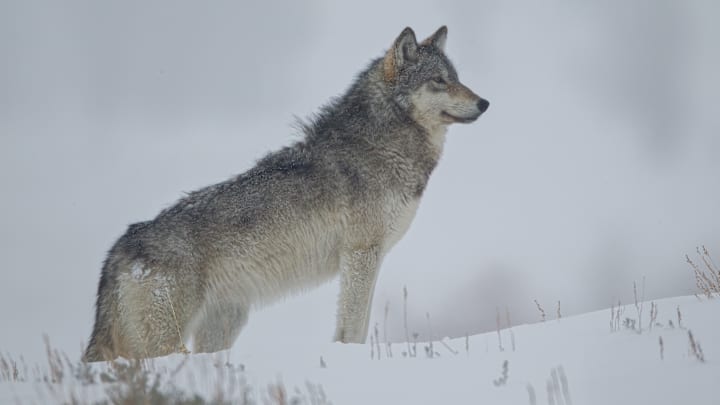Yellowstone National Park isn’t just home to geysers like Old Faithful. There’s also plenty of wildlife, from the Yellowstone cutthroat trout that traverse its rivers and streams to cougars, the largest of the area’s cat species. Gray wolves are a fairly recent addition to its modern ecosystem. A new study published in the journal Forest Ecology and Management suggests that the reintroduction of the species is contributing to the growth of aspen trees in the park.
How Wolves Restored Balance to Yellowstone

According to The Washington Post, the only apex predators that roamed Yellowstone National Park for most of the 20th century were bears and cougars after wolves were eliminated from the area. The lower number of carnivores allowed elk populations to increase drastically. As a result, more elk feasted on aspen trees, keeping the average height of saplings at around 1 meter (3.28 feet) and preventing them from growing to their normal height of about 40 feet.
Things have changed a lot since the reintroduction of the canids in the mid-1990s. The addition of wolves in Yellowstone led to a significant reduction in elk. After examining aspen tree group (a.k.a. stand) growth trends, the researchers from Oregon State University saw a 152-fold increase in density among saplings and young trees. More specifically, the experts found the young trees had a diameter of more than 5 centimeters at breast height for the first time in decades.
There’s still a long way to go for the aspens: 38 percent of stands experience overgrazing from bison and elk. Additionally, 32 percent of them still exhibit patchy growth.
Why Were Wolves Eradicated From Yellowstone?

In an effort to save Yellowstone’s elk and other hoofed animals, Congress funded the systematic culling of all wolves in the area in the 1910s and 1920s. The order led to the elimination of approximately 136 wolves. This resulted in a rise of sick animals in the park, which are normally easy pickings for wolves, and the subsequent overpopulation of elk.
In 1995, biologists convinced Congress to support the reintroduction of gray wolf packs to the park to fix these issues. The species made a strong comeback in the area within a decade.
Wolves aren’t the only things to look out for in Yellowstone National Park; a new geothermal vent also appeared this year.
Read More About Nature:
